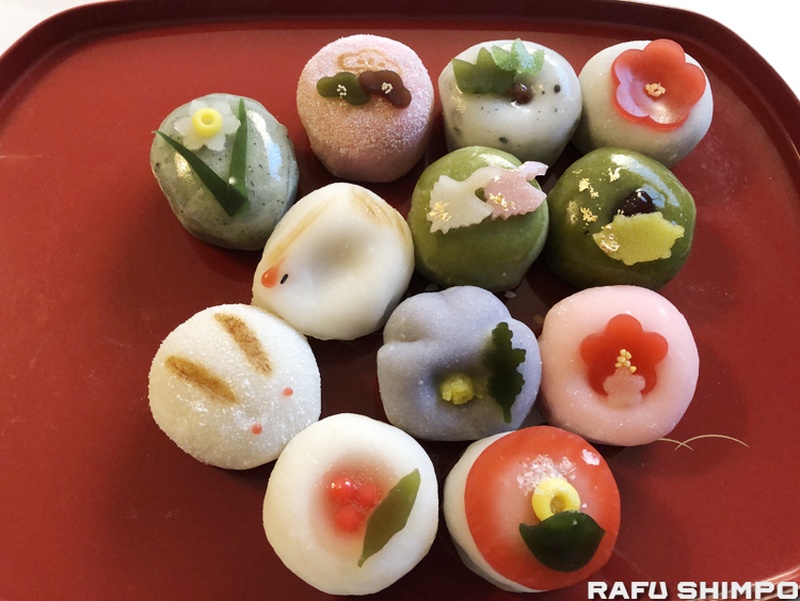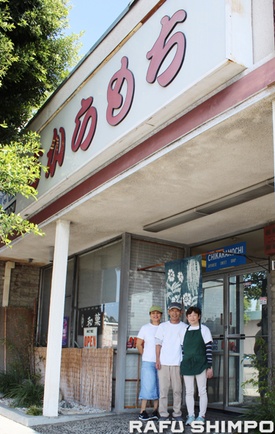Bank balance is only $1. Debt "Repaying with gritted teeth"
"In 2009, the store was on the verge of bankruptcy." They can now talk about it casually, but the two will never forget the days that led them to this point.
"Because I was an employee before I took over the store, I didn't know (the store's financial situation). When I looked into it, it was in a terrible state," Kinue said. The company's bank account had a balance of just one dollar. The company was in dire straits and was receiving financial support from many sources, including business partners. "Only my nephew, who took over the store, knew about this, and no one around me, including my sister-in-law..."
They had to pay the debts they owed to the vendors. They kept the store open and continued to employ five people. If they filed for bankruptcy, they wouldn't have to repay the debts. However, "it couldn't be that way," said Kinue. "Maybe I should have closed the store down, but it's the Japanese temperament that makes it impossible. I can't walk around with my head held high. My business partners said I could pay in installments, so I gritted my teeth and paid the debts back."
At that time, through an acquaintance of his sister-in-law, he was introduced to the accountant Kiyoshi Kurita. "I spoke to Mr. Kurita and he said, 'I'll help you get back on track,'" he said. He taught him a lot, from how to manage the business to how to keep accounts and how to use a computer. He recommended that he buy something, even if it was just a laptop, and he bought one right away. "I'd never used a computer before, so he kindly taught me everything from how to turn it on."
With Awata's guidance, the company gradually eliminated its deficit. Just as it was finally turning a profit in October 2013, something shocking happened to Chika-ra-Mochi.
Overcoming the three-year management crisis. "We've come this far thanks to the people we've had"
Just as the store was starting to turn a profit, Kurita passed away suddenly. "We were so shocked." They had not been able to give anything back. "We can't let it go under," Kinue and the others vowed to themselves.
The business situation at the store improved in the fall and got even better the following year. After a while, we were able to buy new machines. We had finally made it through three long and difficult years.
During that time, the Salvadoran employees and their families came along with us. Making Japanese sweets is a specialized job. It was also difficult for them to change jobs.
His relationship with El Salvador continues from his older brother's generation. He supported them in their daily lives, such as finding a home and obtaining visas for their family. "In El Salvador, 'chikara mochi' seems to be famous for immigration," says Koike.
Speaking of the Mexican man who has been working there for almost a year, Koike said with an impressed look on her face, "He is earnest and hard-working. He is more Japanese than most Japanese people. He has never been late."
"There were a lot of difficulties, but we've come this far thanks to the people we've met," the two men said, nodding in agreement as they looked back on their journey.
The popularity of SNS has the power to expand customer base and penetrate the local area
In recent years, Chikara Mochi's customer base has been changing. The number of Japanese and Japanese-Americans has decreased, while the number of customers from the Philippines and Southeast Asia has increased. "The change started two or three years ago. I think it's because of the influence of social media," says Kinue. The global spread of sharing photos on social media has also brought about changes in Chikara Mochi's business. Recently, customers of non-Asian descent have started to visit after seeing photos of the store's Japanese sweets on social media. Orders are pouring in for gifts for the holiday season and other occasions.
As the store's customer base changes, the store owners have begun to think about flavors, designs, and colorful colors that will attract them. For customers who don't like beans or bean paste, they start with flavored mochi. Next, they recommend strawberry flavored bean paste. They believe that the first priority is to "make customers understand about mochi."
Japanese sweets may look different, but the bean paste inside tastes almost the same. If they don't keep on being creative, they won't expand their customer base. Designs that would disappoint a tea master are now on display in the storefront. But if they can't be accepted by non-Japanese customers who happily buy flavored mochi, it won't be a viable business. In the fall, they think of Halloween and Thanksgiving, and at Christmas they decorate the sweets with trees and holly. For Girls' Festival and Boys' Festival, the showcases are lined with Japanese sweets that are visually pleasing in their own way. At the same time, Kinue says, "We will continue to make things that we are particular about."
Thanks to the store's efforts, the store's Japanese sweets have become so well-known in the local area that, according to Koike, "they often sell out within two hours of opening."
The dilemma of craftsmen is to "do their best," to meet the expectations of the community, and to protect their stores
Kinueda considers himself to be "inexperienced in both skills and knowledge as a craftsman." He has not been an apprentice or trained in earnest. He has been working at the store front for 10 years and has been making products for 10 years, but he still feels that he has a long way to go. That is why he maintains an admirable attitude, saying, "We always try to do our best in business."
As the number of Japanese sweet shops in the area decreases, the voices of the local community wanting the shop to continue sometimes feel like a burden. "I never get over my anxiety about whether I can withstand the pressure and meet their expectations," Kinue confesses.
Contrary to the craftsman's concerns, Yoko, who waits on customers, says, "The Japanese sweets my sister-in-law makes are brighter in color than those her husband (Maruoka) used to make. The designs are intricate and beautiful, and the variety has increased considerably." Customers often ask Yoko if the craftsman is a woman, or tell her that the designs have become more beautiful. "She's the only one in the shop who knows all the steps, including the physical labor." As Kinue's sister-in-law, Yoko can better understand that Kinue's efforts up to now have been no mean feat.
"Jo-namagashi" served at special tea ceremonies is considered to be a high-class item among Japanese sweets. Kinue received an order for "jo-namagashi" from the president of a world-famous restaurant for his home.
When a tea master visits, bringing a book with him, he sometimes asks him to make something. Even in such cases, he always says, "I'll do my best."
By the time Kinue catches up with her master Maruoka's 37-year career, what changes will Chikaramachi's Japanese sweets have undergone, and what will they continue to preserve?
*This article is reprinted from the Rafu Shimpo (January 1, 2019).
© 2019 Mie Aso / Rafu Shimpo







